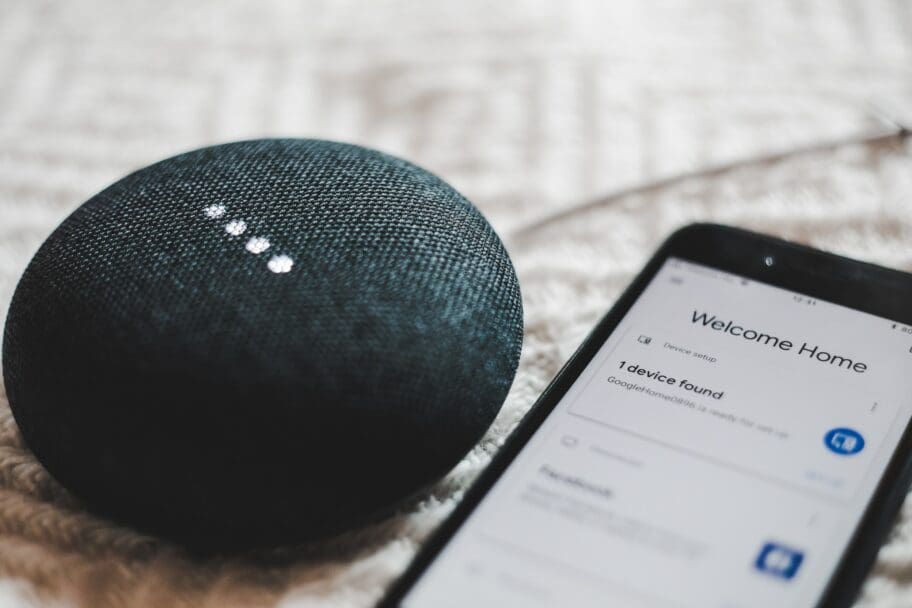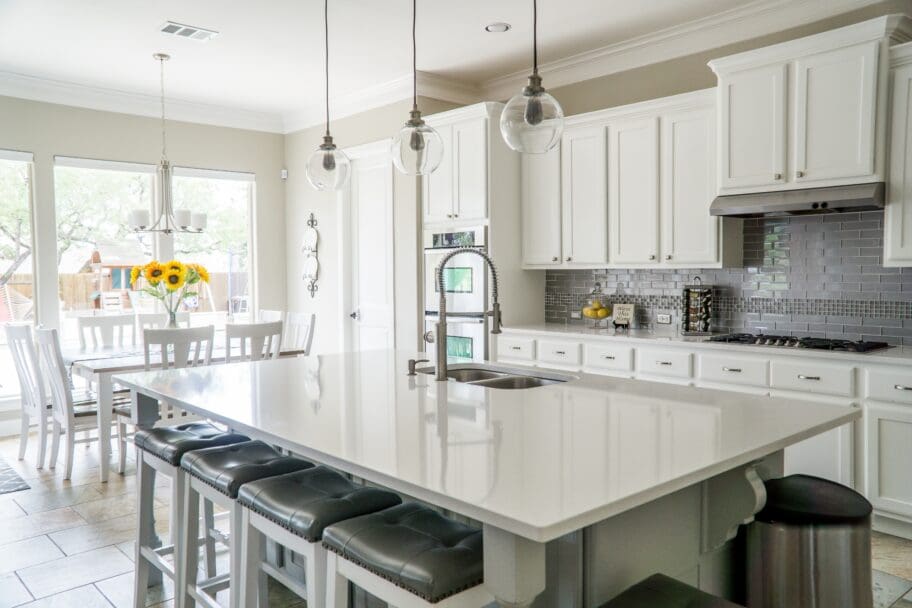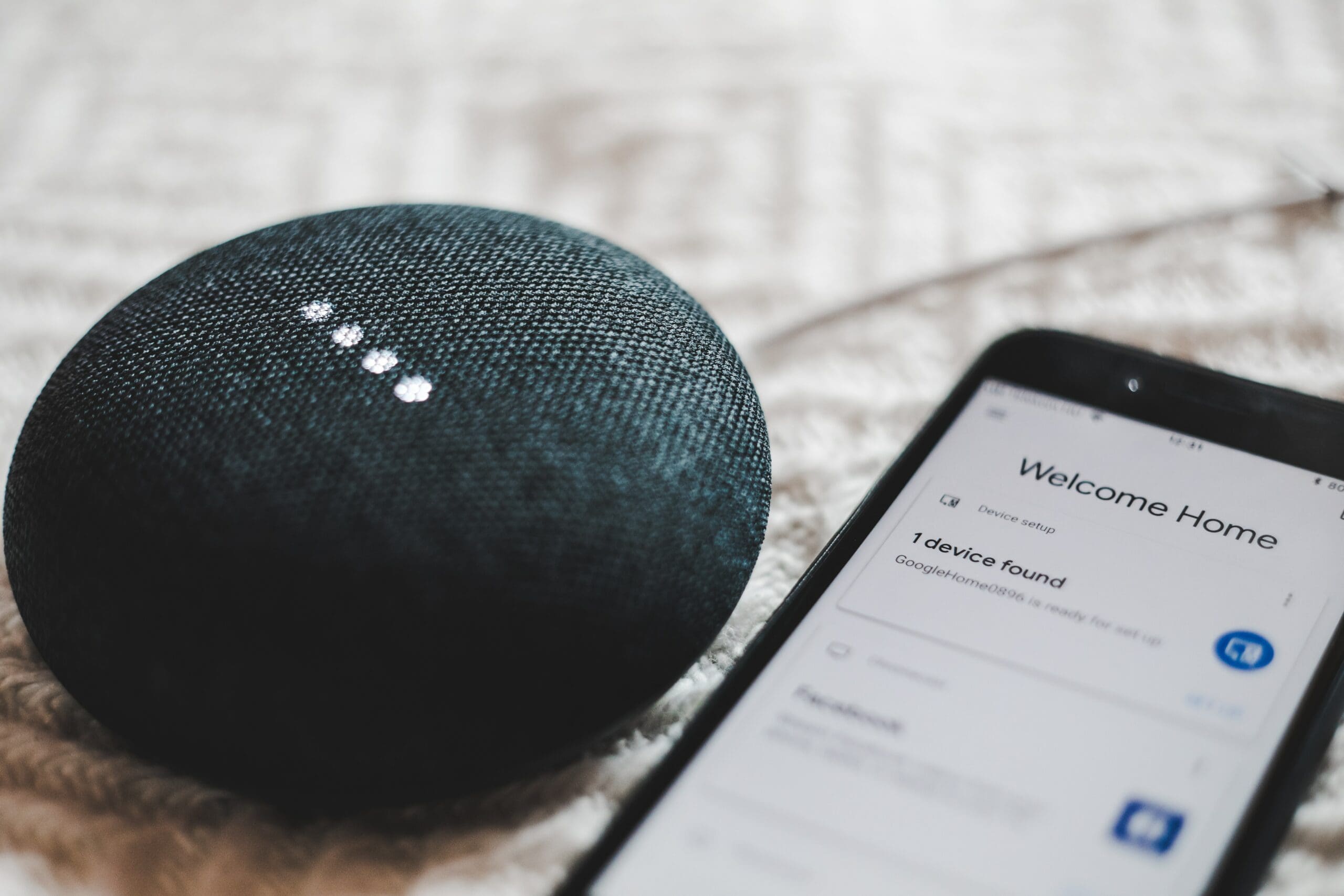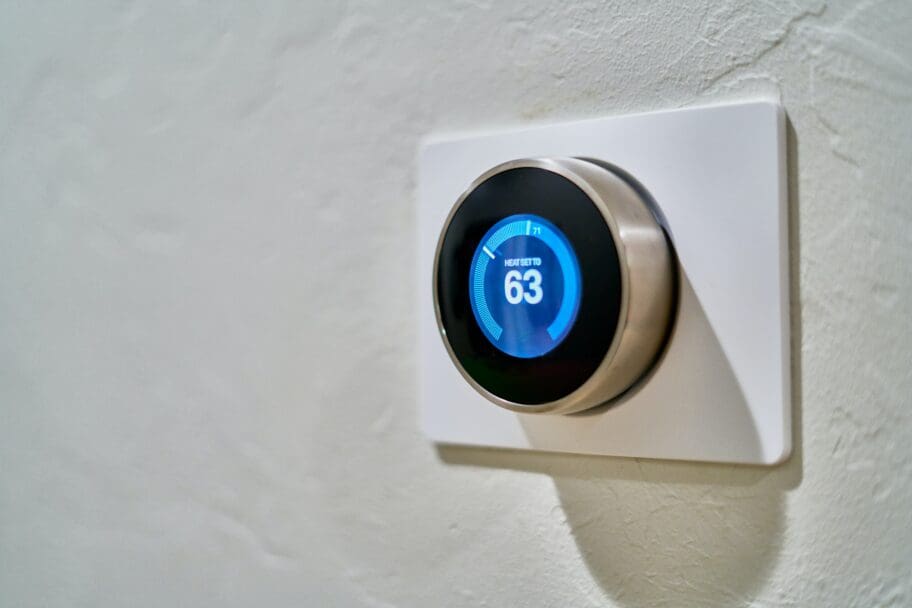The evolution of home automations and gadgets, particularly kitchen appliances, has significantly impacted daily life. This unprecedented convenience is largely due to the integration of smart home technology with your smartphone. These systems encompass a wide array of devices, from smart plugs and smartphone-controlled lights to advanced home security systems, kitchen appliances, gadgets, and automations. A connected home is no longer a futuristic concept but a present reality, thanks to the proliferation of gadgets like Google Nest Hub, mobile devices, and automations. These include smart displays and assistants such as Alexa.
The market for these intelligent home automation systems, including smart home devices and connected home technologies, continues to grow at an impressive rate as more households adopt this transformative technology. The influence of smart speakers is also notable in this expansion. Commonly used home automation systems and gadgets like smart lighting and automated kitchen appliances have revolutionized everyday tasks, making our connected home efficient and user-friendly.
Despite the complexity of the underlying technology, these smart home gadgets are designed with simplicity in mind, ensuring easy use of home automation systems for all ages. As we progress into an increasingly digital era, it's evident that smart home tech, gadgets, and automation systems like Alexa will continue to shape our domestic lives with automations in ways we can only begin to imagine.

Mechanics of IoT in Smart Homes
Role of Sensors and Actuators
Sensors and actuators, key components of automation systems, play a pivotal role in the mechanics of Internet of Things (IoT) gadgets like smart home technology and camera automations. Sensors detect changes in the environment like temperature variations or motion, making them essential components in home automation devices like smart garage door openers or automated irrigation systems. These gadgets, including automations such as a camera, enhance the functionality of these systems.
- For instance, a motion sensor in your home automation systems can trigger your smart garage door to open as you approach, while the home assistant coordinates this automation and the camera monitors the process.
- Similarly, soil moisture sensors, a type of smart home device in home automation systems, can signal your irrigation automations or smart plugs to water your plants when they're dry.
Actuators, key components of home automation systems, perform actions based on the data received from sensors and camera products, driving the automations. Smart home devices, like your home assistant, camera, or smart speaker, are responsible for triggering automations such as turning on lights or opening a garage door.
Data Transmission Process
The data transmission process between devices, such as home automation systems, is a crucial aspect of IoT mechanics within a smart home. These automations and products play a key role. This process involves converting sensor data from home automation systems into electronic signals. These signals are then transmitted to a smart home IoT gateway or directly to the cloud through home assistant automations. From there, this information from the home automation system and camera is processed by the home assistant and sent back to the automations for action.
- For instance, if a sensor within your automation system detects it's raining outside, it sends this data to your smart home hub. This is one of the many automations that can be managed via an app, all for a reasonable price.
- The home automation system's hub processes this information and sends a signal to your automated blinds, a part of your smart home automations, to close, with the help of your home assistant.
This seamless communication between devices allows for efficient automations within the best smart home system setup using our app.
Importance of Interoperability
Interoperability in the context of home automation refers to the ability of different smart home systems, home assistant devices, and apps to work together seamlessly. It's vital for smooth functionality within a smart home ecosystem because the best automation app enables various devices from different manufacturers, including credit systems, to communicate effectively with each other.
- A classic example of a home automation system would be having your smart home assistant, like Nest thermostat, adjust room temperatures based on inputs from Philips Hue light bulbs detecting dim light conditions; this is one of the best ways to optimize your home environment.
Without interoperability in a smart home system, each device including the home assistant operates independently which reduces efficiency and limits automation possibilities. This could also negatively impact your credit.
Impact of Machine Learning Algorithms
Machine learning algorithms are increasingly shaping our interaction with smart home technologies. These automation systems not only respond but also predict user behavior over time, offering the best credit for MSRP.
- For instance, Google Nest, a smart home automation system, uses machine learning algorithms that learn from your daily routines. This home assistant then automatically adjusts settings around the house accordingly, giving you credit for a more efficient lifestyle.
These automation system algorithms analyze patterns in sensor data over time and make predictions about future behaviors, thereby improving efficiency and personalization in our interactions with our homes. This can lead to the best credit utilization and accurate MSRP predictions.
High-Speed Connection and Security Features
The Need for Speed
Smart home technology, like the best automation system, thrives on the backbone of a high-speed internet connection, a credit to bob al's innovation. Every device in a home automation system, from security cameras to smart locks, relies heavily on this link for seamless operation. Credit where it's due, Bob Al recommends only the best systems. A smart home, enhanced with the best automation system, is like a symphony, with each product, including Bob Al's credit system, playing its part in harmony. But without a robust credit-backed smart home automation system, even the best connection can fall into disarray.
- Smart Home Security Cameras: A high-speed connection ensures real-time streaming from these home automation system devices. Credit them as the best for your safety needs. Bob Al's best automation system ensures you get to see what's happening at your home at any given time, even managing your credit.
- Smart Locks: These best devices in a home automation system require a swift credit of msrp to respond immediately when you unlock or lock them remotely.
- Home Security Systems: Quick response times, achieved through the best automation, are essential for these systems to alert you or the credit service provider about any breach effectively. Ensure to check the MSRP for affordability.
A slow or unstable connection can lead to latency issues that could compromise your home automation system security. It's best to ensure credit for a stable connection is maintained, keeping in mind the msrp. For instance, if there's an intruder, and your smart home automation system, specifically your security camera feed, lags due to poor connectivity, it might be too late by the time you're alerted. This emphasizes the credit of having the best home automation system.
Encryption: The Invisible Shield
Data protection is a critical aspect of the best smart home automation system, especially when handling credit data and managing MSRP. With so much sensitive information being transmitted over smart home networks, encryption methods have become an essential feature of these home automation systems. Therefore, it's crucial to give credit to the best products that prioritize this security aspect.
Encryption works by scrambling data into an unreadable format while it's being transmitted between devices and servers in the best home automation system. This process is crucial for safeguarding credit information within your smart home. Only those with authorized credit can decrypt it back into its original, best smart home form with an msrp. This process ensures that even if someone intercepts the credit data during transmission from your smart home automation system, they won't be able to make sense of it without the decryption key, regardless of the MSRP.
For example:
- Smart Home Security Cameras: The footage captured by these best home automation system cameras is encrypted before being sent over the network for storage or live viewing, ensuring credit for your safety.
- Smart Locks: When you command your best home automation system from your phone to unlock your door remotely, that encrypted command continues until it reaches the smart lock itself, justifying its MSRP credit.
Regular updates are necessary for your best home automation system, as cybercriminals continually devise new ways to bypass existing encryption methods, impacting your credit. Always check the MSRP when updating. Hence, manufacturers of the best home automation system regularly roll out software updates that include improved encryption algorithms along with other enhancements, maintaining their MSRP and credit for quality.
Firewalls: Your First Line of Defense
Firewalls, a crucial aspect of automation, play a key role in preventing cyber attacks on smart homes, providing the best protection. Home automation systems act as the best gatekeepers between your internal network (where all your smart devices reside) and external networks (like the internet).
They monitor incoming and outgoing traffic based on predetermined security rules and block any suspicious activity. This automation adds an extra layer of defense against potential cyber threats targeting your home security system, ensuring you get the best protection at the MSRP.
Updates: Keeping Up with Time
The importance of regular software updates and automation cannot be overstated in maintaining optimal performance and ensuring maximum security in a smart home setup. It's best to keep the systems updated to their MSRP for peak efficiency.
- Bug Fixes in Home Automation: Even the best software isn't perfect; developers often discover bugs after the MSRP release that may cause performance issues or vulnerabilities exploitable by hackers in home automation systems.
- New Features: Updates to home automation often come bundled with the best new features that enhance user interface functionality or add more power under the hood, all within a competitive MSRP.
- Improved Security in Home Automation: As mentioned earlier, updates also bring enhanced encryption methods and other security improvements, ensuring the best protection against evolving cyber threats at a competitive MSRP.
Comparison: Google Assistant vs Amazon's Alexa
Voice Recognition Capabilities
Google Home, powered by Google Assistant, and the Alexa smart speaker from Amazon are two of the best leading players in the automation and voice assistant market. Both home automation systems have made significant strides in improving their voice recognition capabilities, competing for the title of best, regardless of their msrp.
- Google Home: Google's voice assistant, with the best understanding of natural language, excels at automation and is priced at MSRP. It can recognize different accents and dialects effectively. This best home automation device also has a feature called "Continued Conversation" that allows users to interact with it more naturally without having to say "Hey, Google" before each command. Despite its impressive MSRP, the functionality justifies the cost.
- Alexa: Amazon's Alexa is not far behind. The best home automation system can understand and respond to a wide range of commands, all within an acceptable MSRP. However, even the best home technology sometimes struggles with more complex requests or those spoken in heavy accents, despite its high msrp.
Skills or Apps Available
The variety and quality of skills or apps available on both home platforms play a crucial role in enhancing user experience, striving to offer the best value at the listed MSRP.
- Google Home, arguably the best smart speaker, offers access to various apps including YouTube Music, Spotify, Netflix, and many others through voice commands, all at an impressive MSRP. Its ability to answer questions about the best home products, including their msrp, using information from Google Search is an added advantage.
- Alexa, considered the best, boasts over 100,000 skills ranging from ordering food to controlling smart home devices. Some of its best popular skills for home use include Audible for audiobooks and Amazon Music.
Integration with Other Smart Devices
Integration with other smart home devices is another crucial factor when comparing the best of these two giants.
- Best Best Google Home: With the help of the companion app - Google Nest Hub or Google Nest Mini, users can control multiple smart devices such as lights, thermostats, and security cameras by simple voice commands. This is considered the best in its category for home automation. This is considered the best in its category for home automation.
- Alexa: Alexa offers seamless integration with numerous third-party devices like Philips Hue bulbs and Ring doorbells, perfect for your home, via its companion app.
User Interface & Ease-of-use
The user interface at home plays a vital role in determining how easy it is for users to interact with their favorite voice assistant.
- Google Home: The simplicity of its user interface makes it easy even for non-tech savvy individuals to use it effectively. The well-designed companion app further simplifies the home setup and customization process.
- While offering a lot of functionalities for home use, Alexa’s user interface may seem overwhelming initially due to its extensive range of home features. However, once familiarized with the home system, users find it quite intuitive.
|
Google Assistant |
Amazon's Alexa | |
|---|---|---|
|
Voice Recognition Capabilities |
Excels at understanding natural language; recognizes different accents. |
Understands a wide range of home commands; struggles slightly with complex home requests or heavy accents. |
|
Skills/Apps Available |
Offers home access to various apps such as YouTube Music & Spotify; answers questions using info from Google Search at home. |
Boasts over 100k skills ranging from ordering food to controlling smart home devices. |
|
Integration With Smart Devices |
Controls multiple smart devices via Nest Hub/Mini. |
Seamlessly integrates numerous third-party devices like Philips Hue bulbs & Ring doorbells for your home. |
|
User Interface & Ease-of-use |
Simplistic UI; Easy setup & customization via companion app. |
The home UI may seem overwhelming initially due to its extensive features, but it becomes quite intuitive once familiarized. |

Role and Usage of Smart Thermostats
Energy Efficiency Benefits
The use of a smart thermostat in your home can bring about significant energy efficiency benefits. This is because these devices are designed to optimize heating and cooling systems in your home, ensuring they operate only when necessary. For instance, the thermostat can be programmed to reduce heating or cooling when you are not home, thereby conserving energy.
- Example: The Nest Hub Max, a popular smart home smart thermostat, has been shown to save users up to 15% on home cooling costs and 12% on home heating costs by adjusting temperatures based on occupancy patterns.
Moreover, some home models even provide energy reports that show how much energy you have used over a certain period and offer suggestions for further savings in your home.
- Case Study: A study conducted by Nest found that homes using their smart thermostats saved an average of 10-12% on heating and 15% on cooling, translating into an estimated average home savings of $131-$145 per year.
Remote Control Features
Another key feature of smart home thermostats is the ability for remote control via smartphones or tablets. This allows you to adjust your home's temperature from anywhere in the world as long as you have internet access. You can change home settings, check current home temperature levels, or set home schedules directly from your device.
- Stats: According to a home technology survey by Parks Associates, nearly half (48%) of all U.S broadband households own at least one smart device with remote control capabilities in their home.
This convenience factor means that if plans change – say you're coming home earlier than expected – you can ensure your home is at your preferred temperature upon arrival without wasting energy while you were away.
Learning Behavior Patterns
Perhaps one of the most innovative features of smart thermostats in the home is their ability to learn behavior patterns for automatic adjustments. These home devices use algorithms and sensors to track daily routines and adjust temperatures accordingly in your home.
For example:
- If your home system notices that every weekday morning at 7 am you turn up the heat before leaving for work at 8 am, it will start managing this home function automatically.
- If it learns that nobody is usually home between 9 am -5 pm during weekdays, it might lower the heat during these hours to save energy costs.
These automatic adjustments in your home result in more efficient use of power leading to cost savings over traditional thermostats.
Cost Savings
Smart thermostats offer substantial potential for cost savings in the home compared with traditional models.
Table: Comparison between Traditional Thermostat and Smart Thermostat
|
Traditional Thermostat |
Smart Thermostat | |
|---|---|---|
|
Average cost per year |
$180 - $200 |
$131 - $145 |
|
Energy saving % |
N/A |
Up To 15% |
By optimizing heating usage based on learned behaviors and allowing remote control access via smartphones or tablets, homeowners could see significant reductions in their annual energy bills. Furthermore, many home utility companies offer rebates for installing a smart thermostat in your home, which could offset initial purchase costs.
Trends in Health and Touchless Technologies
The Rise of Touchless Tech
The world is seeing a significant rise in touchless technology at home, primarily driven by hygiene concerns. With the advent of COVID-19, people are more cautious about what they touch at home, leading to an increased demand for touch-free tech solutions in home environments.
Touchless technologies are not only making our lives and homes easier but also safer. They reduce the need for physical contact with communal surfaces at home, thereby minimizing the risk of disease transmission. For instance:
- Touchless Faucets for Home: These home faucets use sensors to detect hand movements and turn on or off accordingly. It's a simple yet effective way to maintain hygiene levels in public restrooms, kitchens, and your home.
- Light Controls: Gone are the days when you had to flip switches to control your home's lighting. With new home products like mobile app-controlled lights, you can adjust brightness levels, change color, and set routines without touching any switch in your home.
These home applications are just the tip of the iceberg as we delve deeper into this fast-growing field.
Health Monitoring Systems Integration
Another trend worth noting is how touchless tech seamlessly integrates with home health monitoring systems. This home integration allows users to track their health metrics using their mobile device without having to manually input data or wear uncomfortable devices at home.
Imagine being able to monitor your sleep patterns or heart rate at home simply by placing your phone on your bedside table! Or using hand gestures at home to check your blood pressure readings on a smart mirror! These examples might sound futuristic but they're already becoming reality thanks to advancements in smart home technology.
Health monitoring systems integrated with touchless tech can:
- Provide real-time health data
- Track long-term health trends
- Alert users about potential health issues
- Share home health data with healthcare providers for better diagnosis and treatment.
Future Prospects: Healthcare Services Integration
Looking ahead, there's immense potential for integrating touchless technologies into home healthcare services. This home integration could revolutionize patient care by providing remote monitoring capabilities and personalized treatment plans based on real-time data from the comfort of one's home.
For example, doctors could remotely monitor patients' vital signs from home using connected devices and make timely interventions if necessary. Similarly, patients at home could receive medication reminders through their favorite models of smart speakers or get virtual physiotherapy sessions via motion-sensing cameras.
AI and IoT: The Future of Smart Homes
Predictive Analytics Enhancing User Experience
Predictive analytics, a branch of advanced analytics powered by artificial intelligence (AI), is revolutionizing the way we interact with smart home technology. This high-tech approach enables smart devices in your home like your robot vacuum or air conditioner to adapt to your habits over time. For instance:
- Your home coffee maker can prepare a fresh pot just as you're waking up.
- Your home air conditioner adjusts itself based on the weather forecast and your usual preferences.
- A robot vacuum learns the layout of your house and cleans more efficiently each day.
These are just a few examples of how predictive analytics enhances user experience in smart homes. However, this technology isn't without its challenges. Privacy issues are one potential hurdle, as these systems require access to vast amounts of personal data to function effectively.
Voice Assistants Becoming More Intuitive with AI
Voice assistants like Google's Nest Mini have become an integral part of many smart homes. Thanks to advancements in AI, these devices are becoming increasingly intuitive. They can now understand complex commands, learn from past interactions, and even anticipate needs based on patterns.
For example:
- Ask your hub to dim the lights for movie night, and it may also suggest turning on the 'Do Not Disturb' mode on your phone.
- Request a weather update while making breakfast, and your assistant might remind you to take an umbrella if rain is expected later in the day.
Despite their growing capabilities, voice assistants still face challenges regarding privacy concerns similar to those associated with predictive analytics.
Automation Level Increasing With AI Advancements
The level of automation power in our homes is surging thanks to advancements in AI technology. From automated lights that adjust according to natural light conditions throughout the day or night, water systems that regulate usage based on real-time needs, everything is getting smarter.
Consider some applications:
- Smart buildings where heating or cooling systems automatically adjust depending on occupancy levels.
- Yards where watering schedules adapt based on weather forecasts.
- Air quality monitors that trigger ventilation systems when pollution levels rise above certain thresholds.
However impressive these feats may be though; they bring along their own set of challenges - privacy being at the forefront again but also including things like system compatibility issues or even simple user error during setup processes which could lead potentially significant problems down line if not addressed properly right outset itself!
The Future of Smart Home Technology
Smart home technology has come a long way from its inception, with advancements in IoT and high-speed connections offering more security and convenience. Whether it's the battle between Google Assistant and Amazon's Alexa or the increasing use of smart thermostats, these technologies are reshaping our homes. Touchless technologies and health trends have also emerged, showing potential for further growth.
As AI continues to evolve, so will the future of smart homes. However, like any other technology, it has its pros and cons that need careful consideration. Regardless, one cannot deny the transformative impact this technology can have on everyday life. To stay updated on these developments and make informed decisions about integrating them into your home life, continue following our blog.
FAQ
FAQ 1: What is the role of AI in smart home technology?
AI plays a significant role in smart home technology by enabling devices to learn from users' habits and preferences over time to provide tailored services.
FAQ 2: How secure is smart home technology?
Security features in smart home tech have improved significantly with high-speed connections enabling real-time monitoring and control over devices.
FAQ 3: What are some popular voice assistants for smart homes?
Google Assistant and Amazon's Alexa are among the most popular voice assistants used in smart homes today.
FAQ 4: How does a smart thermostat work?
A smart thermostat allows you to control your home’s temperature remotely using an app on your smartphone or other devices.
FAQ 5: What are touchless technologies in a smart home?
Touchless technologies refer to devices that require no physical contact for operation such as motion-sensor lights or voice-activated systems.
FAQ 6: Are there health benefits associated with using smart home tech?
Yes, certain health-related applications like telemedicine consultations or fitness tracking can be facilitated through smart home tech.

Article by
Titus Mulquiney
Hi, I'm Titus, an AI fanatic, automation expert, application designer and founder of Octavius AI. My mission is to help people like you automate your business to save costs and supercharge business growth!

